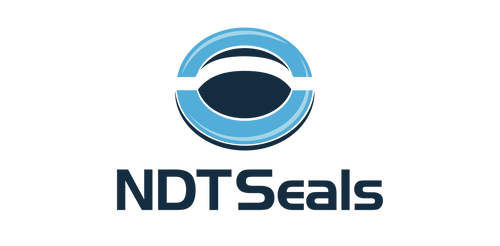Ensuring the integrity of high-temperature piping systems is critical for safety and efficiency. Ultrasonic Thickness Testing (UTT) is a widely used nondestructive testing (NDT) method to assess the thickness of pipe walls, detect corrosion, and monitor degradation over time. UTT in high-temperature environments is vital to help ensure mechanical integrity and essential to that is the role of high-quality thickness measurement location (TML) labels which allow for consistent inspection locations.
The Challenges of High-Temperature Piping Systems
High-temperature piping systems are common in industries such as power generation, chemical processing, and oil and gas. These systems often operate under extreme conditions, making them susceptible to accelerated wear and corrosion. The rate of corrosion increases with temperature, exacerbating the degradation process and posing a significant risk to the integrity of the piping.

Corrosion Rates and Temperature
As temperature increases, so does the chemical activity within the piping material. This heightened activity can accelerate corrosion rates, leading to more rapid material loss and potential failures. Regular monitoring through UTT is essential to detect early signs of corrosion and to implement maintenance strategies before critical damage occurs.
The Importance of High-Quality Thickness Measurement Labels
One of the key aspects of effective UTT is the use of high-quality inspection point labels (IPL). These labels are crucial for several reasons:
1. Accuracy and Consistency: High-quality labels ensure that the measurement locations are clearly marked and remain identifiable over time. This consistency is the foundation for accurate comparison of thickness measurements across different inspection intervals.
2. Durability: In high-temperature environments, labels must withstand extreme conditions without deteriorating. Inferior labels can peel off, fade, or become illegible, leading to inaccurate or missed readings.
3. Adhesion: The labels must adhere firmly to the piping surface to prevent displacement. This ensures that measurements are taken at the exact same locations, providing reliable data for trend analysis and fitness-for-service assessments.
4. Low-Leachable: Label adhesives must be low-leachable to avoid contamination, maintain measurement integrity, and avert safety risks.
Consistent Inspection Locations
Maintaining consistent inspection locations is imperative for accurately assessing the fitness-for-service of high-temperature piping systems. Consistency allows for precise tracking of corrosion rates and the identification of areas with accelerated degradation. Without consistent measurement points, it becomes challenging to determine the true condition of the piping and to make informed decisions about maintenance and repairs.
By using high-quality measurement labels, such as those provided by NDT Seals, inspectors can ensure that their measurement locations remain consistent and reliable over time. NDT Seals' UTT thickness measurement labels are low-leachable and designed to withstand the harshest conditions up to 300 F, providing clear and durable markings that facilitate accurate and repeatable inspections. In high-temperature environments, it is crucial for thickness measurement labels to be low leachable for several important reasons:
1. Preventing Contamination
Leachables are substances that can be extracted from materials when they come into contact with high temperatures or aggressive chemicals. In industrial piping systems, particularly those used in the chemical, pharmaceutical, and food industries, any leachable substances from the labels such as chloride, fluoride and sulfur can cause corrosion cracking, especially on stainless steel piping. This contamination can lead to quality control issues, safety hazards, and potentially costly clean-up and downtime.
2. Maintaining Measurement Integrity
If labels are not low leachable, the substances released can affect the surface of the piping, potentially interfering with the ultrasonic thickness measurements. This can lead to inaccurate readings, making it difficult to properly monitor the condition of the piping and assess corrosion rates.
3. Ensuring Durability
Low leachable materials are generally more resistant to high temperatures and aggressive environments. Labels made from such materials are less likely to degrade, ensuring they remain intact and legible over time. This durability is essential for maintaining consistent inspection points and ensuring reliable data over multiple inspection cycles.
4. Compliance with Regulations
Many industries are subject to strict regulations regarding contamination and material compatibility. Using low leachable labels helps ensure compliance with these regulations, avoiding potential legal and financial repercussions. This is particularly important in industries such as pharmaceuticals, where even trace contaminants can be problematic.
5. Safety Considerations
In high-temperature environments, materials that leach out substances could pose safety risks, such as creating hazardous chemical reactions or compromising the structural integrity of the piping. Low leachable labels minimize these risks, contributing to a safer working environment.
In conclusion, on high-temperature piping systems, regular ultrasonic thickness measurements are crucial for detecting corrosion, assessing material integrity, and ensuring safe operation. The use of high-quality, low-leachable thickness measurement/ inspection point labels enhancex the accuracy and reliability of these inspections, making it easier to monitor corrosion rates and maintain the piping system's fitness for service. For the highest quality UTT thickness measurement labels, visit NDT Seals at ndtseals.com to ensure your inspection process is equipped with the best tools available.
By prioritizing consistent inspection locations and utilizing durable, high-quality labels, industries can better manage the challenges posed by high-temperature environments, ensuring the long-term integrity and safety of their piping systems.

